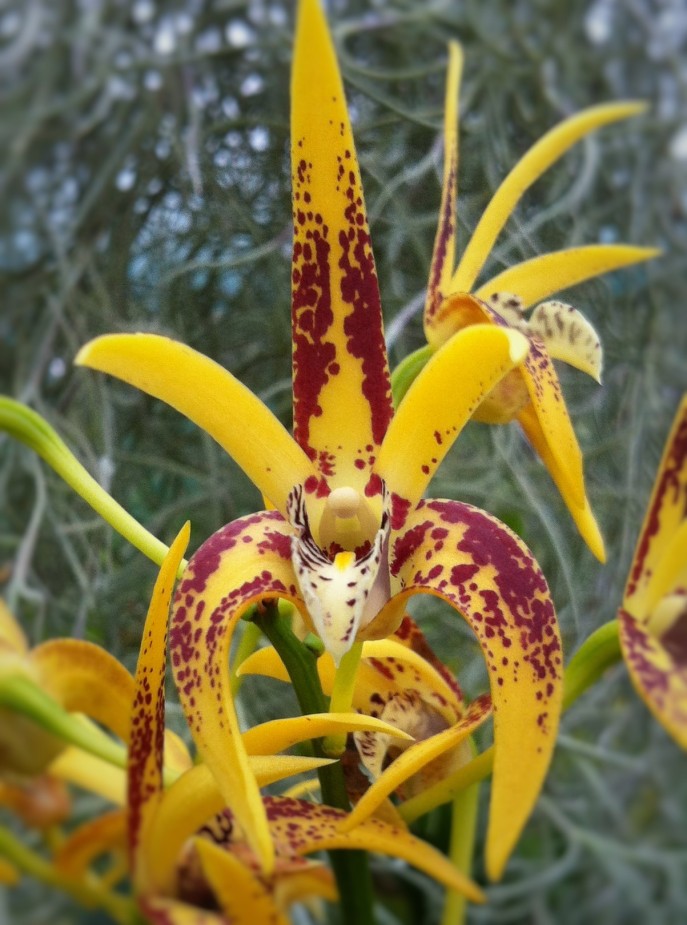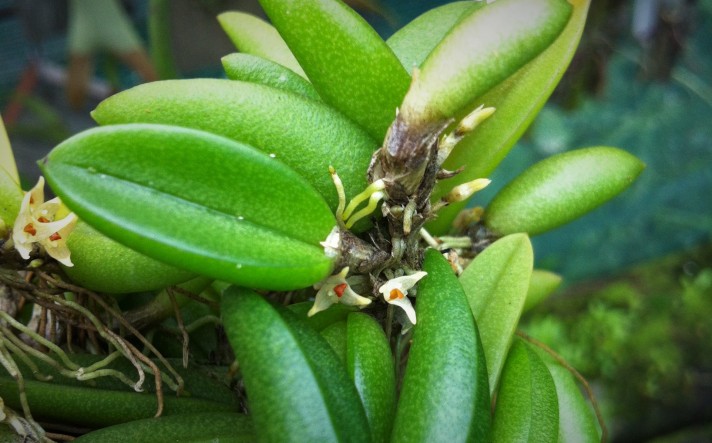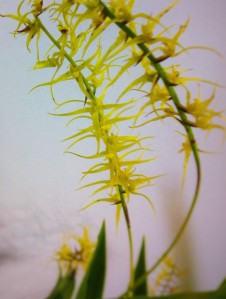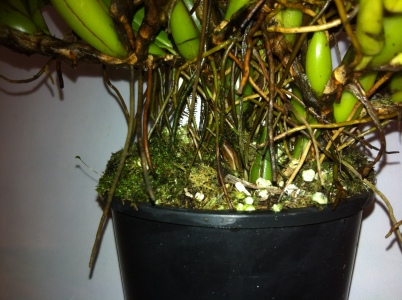The cinnabar red chains of flowers on Dendrochilum saccolabium stand out beautifully amongst the strappy foliage. Although each flower is only small (up to 6mm) their arrangement alternately along the stem gives a symmetry and architecture similar to the tropical heliconias and gingers. 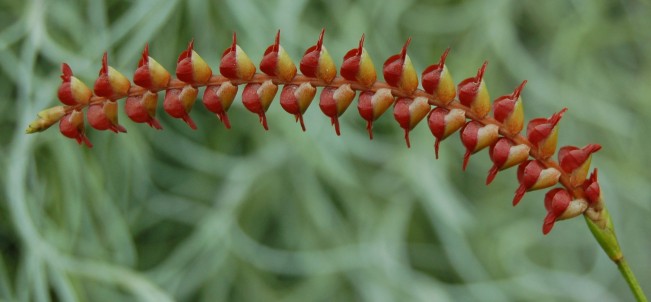
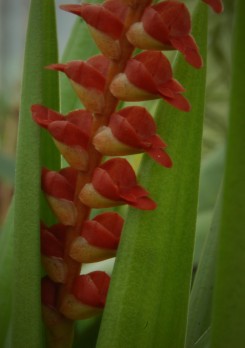
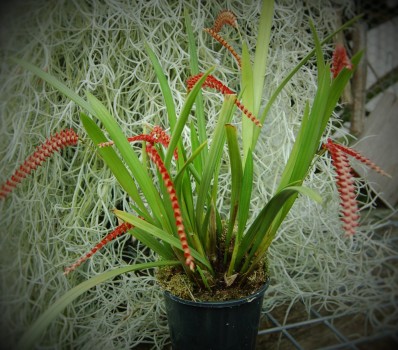 The flowers are held slightly closed giving them the appearing of a pouch or sack (hence the rather bland common name – the Sack-Like Lip Chain Orchid). To our mind the flower stems look more like insects crawling casually through the foliage; perhaps it should have been called the Centipede Orchid or Hairy Caterpillar Orchid instead?
The flowers are held slightly closed giving them the appearing of a pouch or sack (hence the rather bland common name – the Sack-Like Lip Chain Orchid). To our mind the flower stems look more like insects crawling casually through the foliage; perhaps it should have been called the Centipede Orchid or Hairy Caterpillar Orchid instead?
Author: orchidup
Fluoro is back
If you are old enough to remember the 80s then you may remember that hot pink was everywhere. Laelicattleya interceps ‘Fluoro Flash’ harks back to that era but in a clearly more sophisticated way. 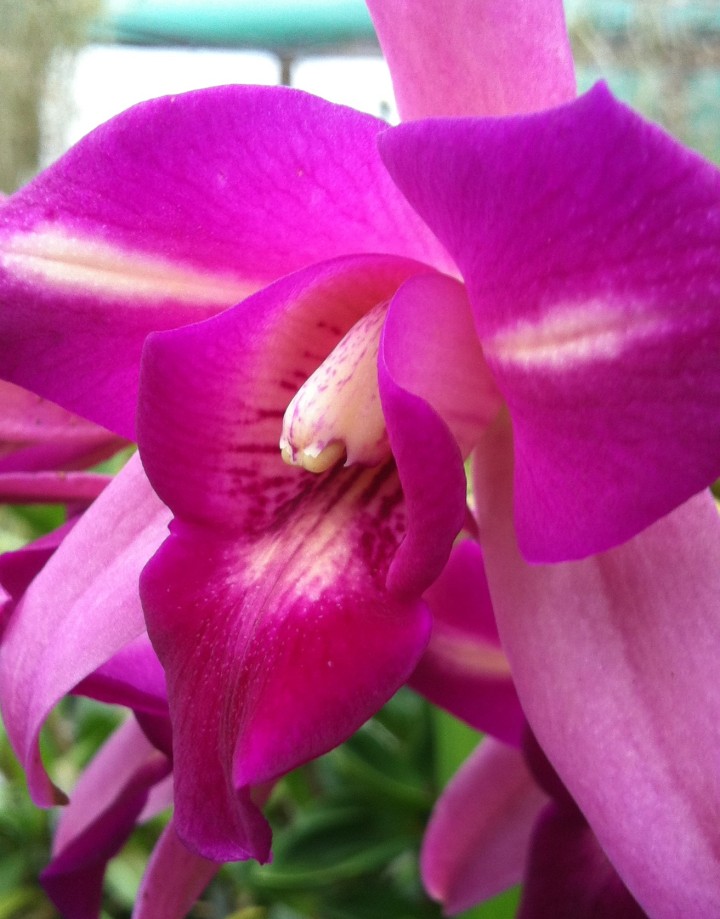 The electric pink flowers are carried high above the foliage with the petals reflecting the white markings of the labellum (a trait known as pelorism or peloria). These large, exotic looking flowers belie the true cool growing nature of the plant and the fact that it flowers in winter means that we can mark the passing of the shortest day of the year in true tropical fashion.
The electric pink flowers are carried high above the foliage with the petals reflecting the white markings of the labellum (a trait known as pelorism or peloria). These large, exotic looking flowers belie the true cool growing nature of the plant and the fact that it flowers in winter means that we can mark the passing of the shortest day of the year in true tropical fashion.
Aussie Gold
It is easy to see why this particular orchid has become so popular but not so easy to see why it has become so notorious. Dendrobium Avril’s Gold ‘Copperpot’ is a hybrid between Dendrobium Aussie Child and D. speciosum. It produces wonderful flowers with a yellow background and variable red markings. The flowers are produced mainly in autumn but can occur at other times of the year. As with most beauties though, there is a hidden side. Regarded as very slow growing, this plant can take years to get to flowering size and plants often “sulk” after being divided. As newer and more vigorous plants, with equally spectacular colourations, enter the orchid scene, this diva is becoming hard to find. It is well worth hunting out a good variety and adding it to your collection as it will always remain an important part of the Australian orchid history.
The Wheat Leafed Rope Orchid
As the first winter rains set in, the orchid house appears to be a world of nothing but green. Many of the summer flowering orchids have finished and there are a mass of spikes emerging as a sign of things to come. By hunting around though, you can still find some hidden gems such as Bulbophyllum (Oxysepala) sheperdii. This could be called a micro miniature as most people would miss their tiny flowers. Each flower is only 3 – 4 mm across and the leaves barely make 2cm. Originating from the subtropical rainforest areas of Eastern Australia, this plant grows best as a mounted specimen with ample humidity and water. It is free flowering producing dozens of flowers over many weeks. I think it is safe to assume that the common name comes from the similarity of the leaves to a grain of wheat.
The Spidery Chain Orchid
This is Dendrochilum arachnites – the Spider Dendrochilum.
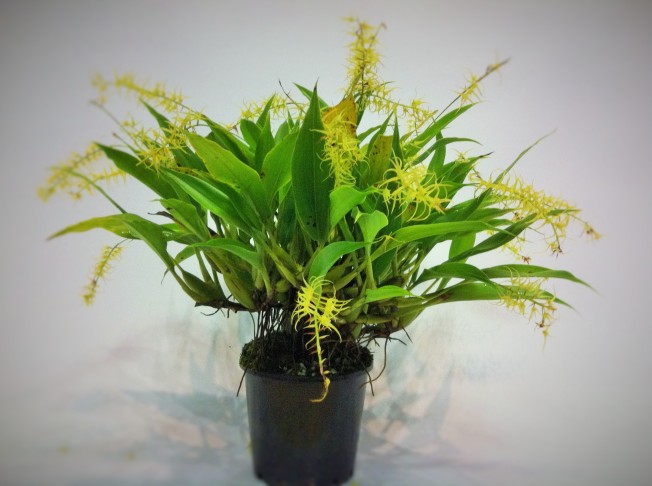 More commonly known as chain orchids, Dendrochilums produce spikes with large numbers of small flowers, often hanging down like a chain. The latin name refers to the spidery flowers which are comparatively large for the genus, but I believe that the name could also refer to the way that the plant uses its roots to lift itself out of the pot, making it look like it is about to walk away.
More commonly known as chain orchids, Dendrochilums produce spikes with large numbers of small flowers, often hanging down like a chain. The latin name refers to the spidery flowers which are comparatively large for the genus, but I believe that the name could also refer to the way that the plant uses its roots to lift itself out of the pot, making it look like it is about to walk away.
Welcome
As Autumn draws in, activity in the orchid house starts to increase. The first cymbidium spikes need staking and the early aussie dendrobiums are starting to show. 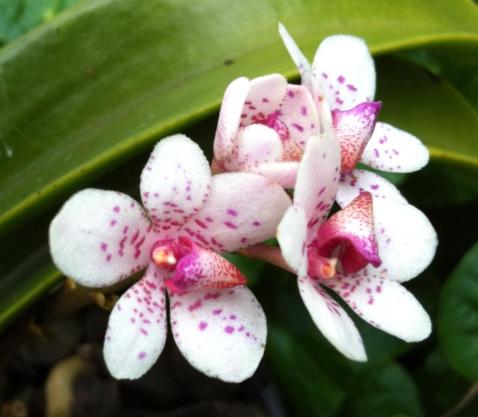 Sartylis Blue Knob is one of the autumn flowering Sarcochilus. An intergeneric cross between Sarcochilus hartmannii and Rhynchostylis retusa, it was first registered over 40 years ago, but is seldom seen today. A strong and vigorous grower, it is classically monopodial, growing as a single, robust trunk (unlike it’s Sarcochilus parent). The delicate white flowers are sprinkled with cerise spots – a characteristic inherited from Rhyncostylis retusa.
Sartylis Blue Knob is one of the autumn flowering Sarcochilus. An intergeneric cross between Sarcochilus hartmannii and Rhynchostylis retusa, it was first registered over 40 years ago, but is seldom seen today. A strong and vigorous grower, it is classically monopodial, growing as a single, robust trunk (unlike it’s Sarcochilus parent). The delicate white flowers are sprinkled with cerise spots – a characteristic inherited from Rhyncostylis retusa.
